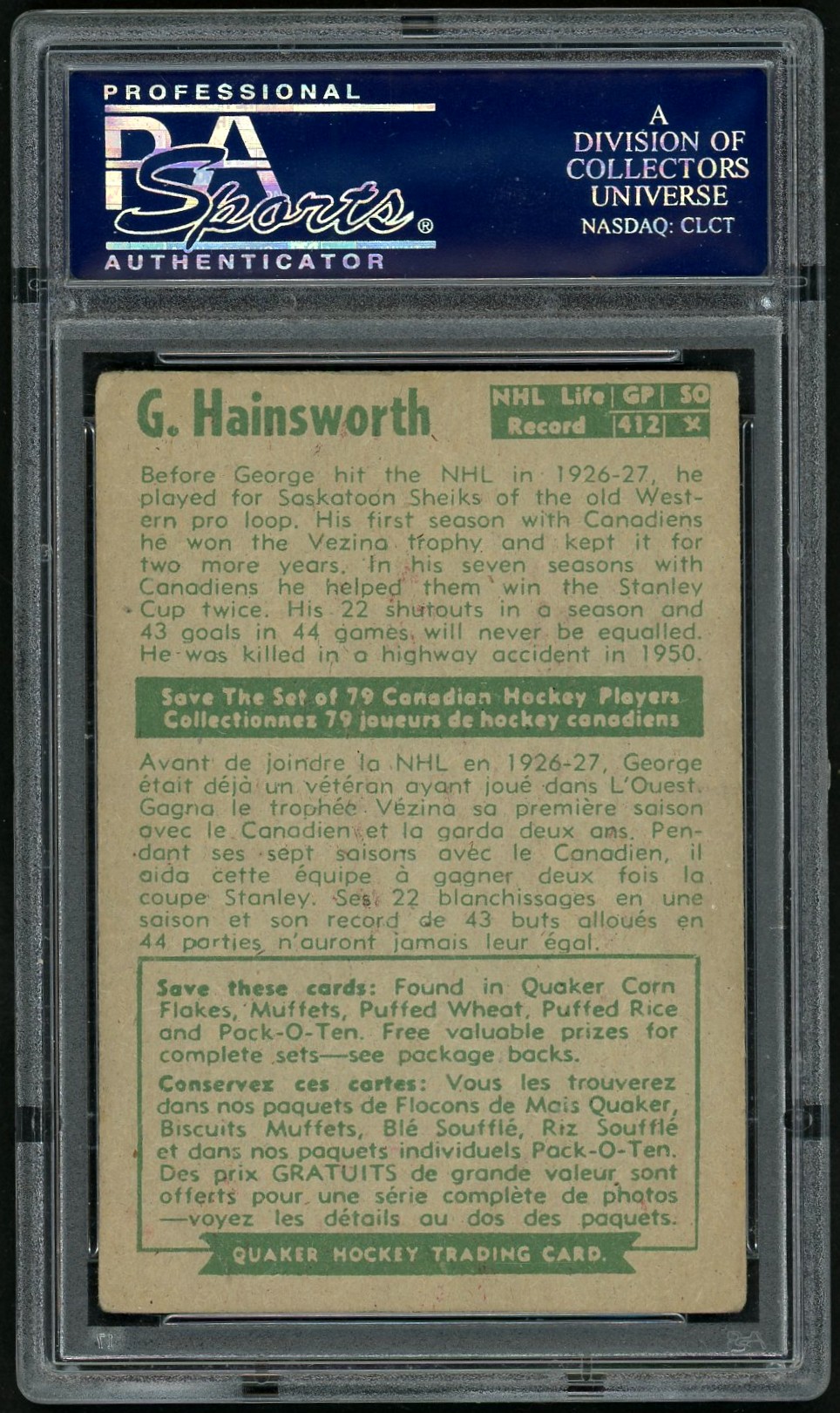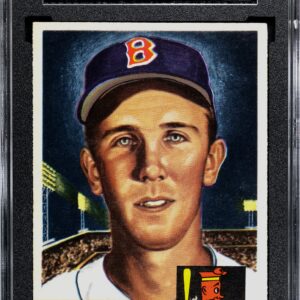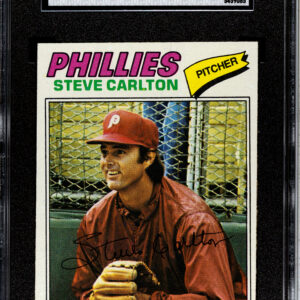Description
HOFer Hainsworth had some off-the-charts stats. His first three seasons were nothing short of astonishing, particularly given the rule changes that came in to help encourage offense. As a rookie in 1926-27, he posted 14 shutouts and a 1.47 GAA in 44 games and won the Vezina. The following season he posted 13 shutouts and 1.05 GAA, in 44 games, winning another Vezina. The next seasons was one for the ages, posting a .92 GAA with 22 shutouts in 44 games, and of course, he won his third consecutive Vezina Trophy win. Rule changes then came again, and his numbers calmed down a bit, but he still won back-to-back Stanley Cups the next two seasons and for the rest of his career was one of the top netminders in the game.
PSA Pop: 1 of 6, 30 higher, of 40 total.
Graded 2 GD (mc) by PSA
*click on images to view hi-rez
Quaker Oats: Parkhurst made this mirror set for food company Quaker Oats which included the hockey cards as a premium in a variety of their products. They are the same as regular Parkies on the front, but the backs feature green ink (regular Parkies had red ink) and included the details of the Quaker contest. There is no mention of Parkhurst. Since the set was meant to be collected in its entirety and exchanged for “valuable prizes”, a few high-profile cards were notoriously short printed (Harry Lumley, Maurice Richard and King Clancy) to rig it so very few prizes were ever awarded.
Looking at PSA populations, you can get a good idea of the scarcity of this set. There is, as of this writing, but 2,298 “green backs” in the PSA database compared to over 9,000 for the regular Parkie set. The next lowest set between Topps and Parkhurst is the 1966 Topps “test” set, which shows approximately 3,800 cards. Of the general sets issued, the 1958 Parkhurst set (approx. 7,000), 1958 Topps set (approx. 7,300) and the 1957 Parkhurst set (approx. 7,500) have the next lowest PSA populations. It may surprise some to learn the most plentiful set from the era is the 1951 Parkhurst set, which has approx. 28,000 cards in the database, followed by Topps inaugural 1954 set at approx. 18,500. In terms of raw numbers, the data is pretty clear.








Reviews
There are no reviews yet.